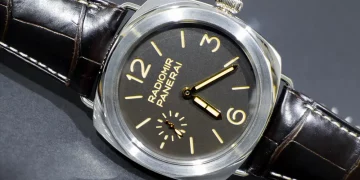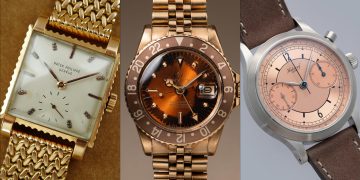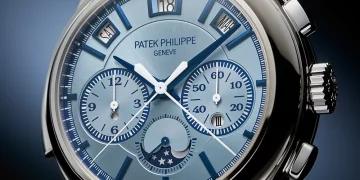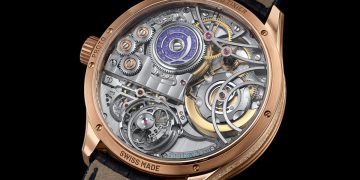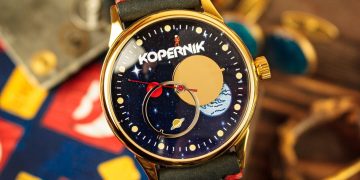The watchmaking industry, particularly Swiss watchmaking, has long been regarded as the epitome of artisanal craftsmanship and luxury. For centuries, traditional techniques have been passed down through generations, producing some of the finest and most precise timepieces in the world. These techniques, which emphasize manual skill, innovation, and exclusivity, have cultivated a rich cultural heritage. However, in an increasingly globalized world, globalization is having a profound impact on traditional watchmaking craftsmanship. From the influence of mass production and technological advancements to the shifting demands of a global consumer base, the cultural values that once defined traditional horology may be undergoing significant changes. This article will explore how globalization is shaping—and in some cases, altering—the cultural value of traditional watchmaking.
1. The Impact of Mass Production and Standardization
Globalization has brought with it the rise of mass production, a concept that runs counter to the very essence of traditional watchmaking, which prides itself on handcrafted precision and individual attention to each timepiece. As global demand for luxury watches increases, many companies, especially those from emerging markets, are opting for mass production models to meet the needs of a broader customer base. While this approach has made watches more accessible to a wider audience, it has also led to a dilution of craftsmanship in some parts of the industry.
a. Shifting Focus from Craftsmanship to Efficiency
Traditional watchmaking, particularly in Switzerland and Japan, emphasizes manual labor, where artisans spend hours, days, or even weeks carefully assembling intricate parts by hand. These mechanical watches are prized for their individuality, and each one is a product of skill and attention to detail. However, the global demand for luxury goods has pressured companies to prioritize efficiency, and automation has begun to replace many aspects of manual labor. Some manufacturers now rely on automated processes to produce watches at a much faster rate, resulting in watches that may still boast luxury components but lack the deeply ingrained personal touch that traditional craftsmanship offered.
With mass production comes standardization, and this shift away from the uniqueness of individual craftsmanship has led to concerns about how much of the cultural essence of traditional watchmaking is being preserved. As the industry becomes more industrialized to keep up with the global market, the value of artisanal techniques and the heritage they represent could be compromised.
b. The Emergence of Low-Cost Alternatives
In addition to mass production, the influence of globalization has led to an influx of affordable, mass-market watches from countries such as China and India. These watches are manufactured using standardized methods and materials, offering consumers an alternative to high-end, handcrafted Swiss or German watches. While these watches may lack the exclusivity and heritage associated with traditional timepieces, they are increasingly appealing to a broader, more price-sensitive market.
The proliferation of these lower-cost alternatives raises questions about whether the luxury watch industry can continue to maintain the cultural value of traditional craftsmanship in the face of a flood of more affordable options. As consumers shift towards more affordable luxury or mass-market watches, the perception of what constitutes a luxury watch is changing, further challenging the cultural significance of traditional watchmaking.
2. Technological Advancements and Modernization
Globalization has brought with it significant technological advancements in many industries, and watchmaking is no exception. The advent of smartwatches and hybrid watches, for example, has introduced a new era of digital timekeeping, presenting a challenge to the traditional mechanical watches that have defined the industry for centuries.
a. Smartwatches: A Threat to Traditional Watchmaking?
The rise of smartwatches, such as the Apple Watch, Samsung Galaxy Watch, and Garmin, has created a new market for timepieces that focus on functionality, convenience, and connectivity. These watches have revolutionized the way people view timekeeping, offering features like health monitoring, fitness tracking, and notifications that traditional mechanical watches cannot provide. The appeal of these modern watches is growing, especially among younger consumers who prioritize technology and practicality over traditional craftsmanship.
Smartwatches have begun to challenge traditional timepieces in terms of value, especially as they offer more affordable alternatives with advanced features. For some, owning a smartwatch is more about aligning with the fast-paced, technologically driven world than it is about appreciating the history and artistry that traditional watchmaking represents. This shift in consumer preference raises questions about whether traditional watchmaking, with its focus on mechanical movements and fine artistry, will continue to hold the same cultural value as it did in the past.
b. Hybrid Watches: Combining Tradition and Technology
In response to the popularity of smartwatches, some traditional watchmakers have started to produce hybrid models that combine mechanical craftsmanship with modern technology. These hybrid watches incorporate analog dials with digital features, attempting to merge the best of both worlds: the timeless appeal of traditional watchmaking and the convenience of modern technology.
Brands such as Garmin, Tag Heuer, and Fossil have embraced this trend, offering connected watches that still retain a classic, analog appearance. While these hybrid watches may appeal to a broader, tech-savvy market, they also prompt a reflection on how the cultural value of traditional craftsmanship is evolving in a world dominated by digital technologies. The very nature of traditional watchmaking, which has been so focused on manual skill and mechanical design, is now being merged with the demands of a digital-first generation.

3. The Influence of Global Consumer Preferences
Globalization has not only expanded the reach of the watchmaking industry but has also diversified the consumer base. The demands and preferences of consumers in Asia, the Middle East, and Latin America differ significantly from those in traditional markets such as Europe and North America. As such, watchmakers are increasingly designing watches that cater to a more globalized market, sometimes at the expense of regional craftsmanship traditions.
a. Shifting Consumer Values
In countries like China, India, and the Middle East, the desire for luxury goods has skyrocketed in recent years, as more people enter the upper-middle class and aspire to own items that reflect their newfound wealth. However, in these regions, consumers are often more focused on the appearance of the watch, its brand name, and the status it provides, rather than its craftsmanship and heritage. As a result, traditional watchmakers are increasingly focused on producing sleek, modern designs to appeal to these emerging markets, which could undermine the cultural value of their time-honored techniques.
Additionally, globalization has led to the rise of young, tech-savvy consumers who are more interested in stylish smartwatches and affordable, trendy pieces rather than the classic, handcrafted models of Swiss watches. These consumers are less likely to appreciate the intricate details and traditional methods that go into a mechanical movement, which in turn has altered how these watches are perceived culturally. For them, a watch is a fashion accessory, not necessarily a symbol of heritage or craftsmanship.
b. The Rise of “Fast Luxury”
As globalization accelerates, there is also a rise in the trend of “fast luxury”—a phenomenon in which high-end goods are produced quickly, often with less focus on traditional craftsmanship and heritage. Brands that cater to this demand, offering luxury watches at relatively affordable prices and quicker production timelines, are increasingly popular in emerging markets. While this may democratize access to luxury timepieces, it also dilutes the cultural value associated with the slow, meticulous processes of traditional watchmaking.
4. Preserving Heritage in a Globalized World
Despite the challenges posed by globalization, many watchmakers are striving to maintain their traditional methods of craftsmanship. Brands such as Patek Philippe, Audemars Piguet, and Vacheron Constantin continue to emphasize the importance of handmade movements, high-quality materials, and exclusive designs, all while staying relevant in a globalized market. These brands invest in training the next generation of horologists, ensuring that the rich cultural heritage of traditional watchmaking is preserved.
Moreover, the rise of the luxury watch market in emerging economies presents an opportunity for traditional watchmakers to educate a new generation of buyers about the value of craftsmanship and heritage. By offering consumers not just a product, but a story—a legacy that stretches back centuries—traditional watchmakers can ensure that their cultural value remains strong even in the face of mass production and changing consumer preferences.
5. Conclusion: Globalization and the Cultural Evolution of Watchmaking
Globalization has undeniably transformed the traditional watchmaking industry, presenting both challenges and opportunities. The shift towards mass production, the rise of digital technologies, and the changing demands of global consumers have altered the way luxury watches are perceived and valued. However, these changes have also sparked new ways for traditional watchmakers to innovate and preserve their heritage.
While some aspects of traditional watchmaking may be diluted in the face of global competition and modern technology, the craftsmanship and cultural significance of fine mechanical watches remain an integral part of the industry. Watchmakers that can adapt to the demands of a globalized world while preserving their heritage, artisanal skills, and values will continue to thrive in an ever-evolving market, ensuring that the cultural value of traditional watchmaking endures for generations to come.







